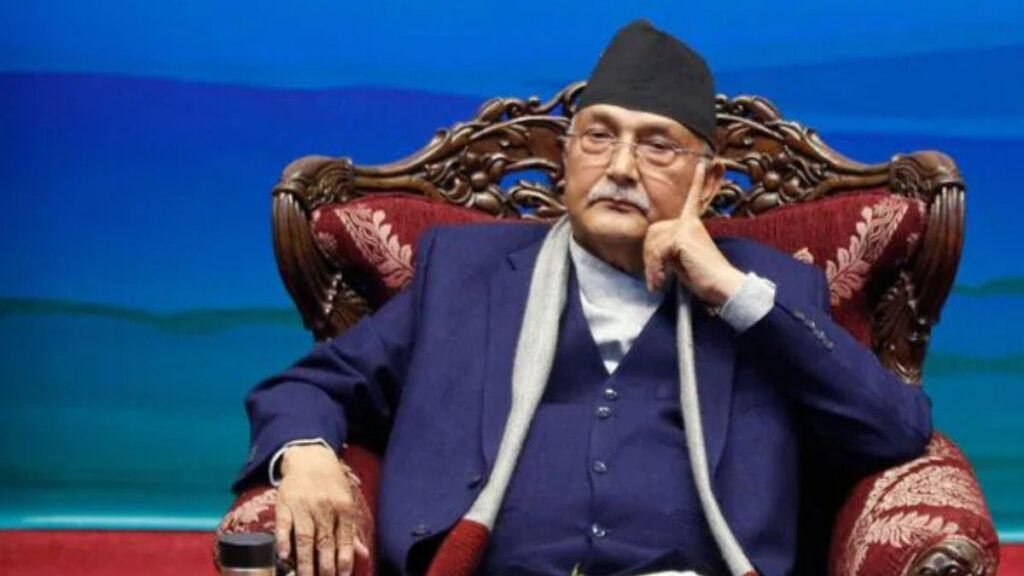Nepal is once again at the center of political and social unrest. A wave of protests, driven largely by the younger generation, has shaken the Himalayan nation. The demonstrations, initially aimed at addressing corruption and governance failures, have turned violent, leading to the tragic loss of lives and destruction of property. Among the victims is Rajyalaxmi Chitrakar, the wife of former Prime Minister Jhalanath Khanal, who tragically lost her life after protesters set fire to their residence.
Amidst the chaos, political figures, including KP Sharma Oli, Nepal’s prominent leader and multiple-term Prime Minister, have come under immense pressure. Protesters have targeted homes, government institutions, and even Nepal’s Parliament building, signaling deep frustration among citizens, particularly the younger population.
This article examines the events surrounding the protests, the political implications for leaders such as KP Sharma Oli, and the broader significance of this uprising for Nepal’s future.
The Tragic Death of Rajyalaxmi Chitrakar
Violence escalated in Kathmandu when protesters attacked the home of former Prime Minister Jhalanath Khanal. His wife, Rajyalaxmi Chitrakar, was trapped inside their residence when protesters set it on fire. Although she was later rescued and rushed to Kirtipur Burn Hospital, she succumbed to her severe injuries during treatment.

Her death highlights the brutal turn these protests have taken. What began as a demonstration against corruption and mismanagement has now spiraled into uncontrolled violence, with innocent lives caught in the crossfire.
Escalation of Nepal Gen Z Protests
Nepal’s younger generation is largely driving the protests – often referred to as Gen Z. The anger of the youth boiled over after reports surfaced that 19 protesters were killed and over 500 were injured during clashes with security forces.
This tragic incident fueled widespread outrage, leading to mass demonstrations across the country. Protesters set fire to critical government buildings, including the Parliament, the President’s Office, and even courts. Major administrative centers such as Singha Durbar, the Supreme Court, and land revenue offices were also attacked.
The chaos reflects the extent of frustration among Nepalese citizens, who feel their voices have been ignored for far too long.
Attack on Political Leaders’ Homes
What shocked the nation further was the targeted attacks on senior political leaders. Demonstrators set fire to the private residence of KP Sharma Oli in Balkot just hours before he announced his resignation.
Other political figures were not spared. The homes of President Ramchandra Paudel, former Prime Ministers Pushpa Kamal Dahal and Sher Bahadur Deuba, and several ministers were also attacked. Stones were thrown, windows smashed, and properties set ablaze.
These attacks reflect the growing anger at Nepal’s political class, which many citizens accuse of corruption, nepotism, and a lack of accountability.
KP Sharma Oli and His Political Journey
To understand why KP Sharma Oli has been at the center of these protests, it’s essential to revisit his political journey. Oli has served as Nepal’s Prime Minister multiple times and remains one of the most influential leaders in the country.
Born in eastern Nepal, KP Sharma Oli entered politics through the communist movement. He played an active role during Nepal’s democratic transition and was instrumental in shaping the modern-day Communist Party of Nepal (Unified Marxist–Leninist).
During his premiership, KP Sharma Oli was credited with introducing significant infrastructure projects and attempting to modernize Nepal’s political structure. However, his tenure was also marked by controversies, accusations of authoritarianism, and strained relations with political rivals.
Resignation of KP Sharma Oli
The intensity of the protests forced KP Sharma Oli to resign from his post as Prime Minister. His resignation came at a time when protesters had already set fire to his house, signaling a direct rejection of his leadership by angry citizens.
For Oli, this resignation marks another turning point in his long political career. While he still retains influence within his party and among certain sections of the population, the violent reaction from protesters suggests that regaining public trust will be an uphill battle.
Impact on Nepal’s Institutions
The protests have left Nepal’s institutions deeply shaken. The attack on the Parliament, the Supreme Court, and administrative offices demonstrates the collapse of public faith in governance.
The closure of Tribhuvan International Airport (TIA) – Nepal’s only international airport – has further added to the crisis. With the army deployed to secure the airport, Nepal has effectively entered an emergency-like state.
These events underline the urgent need for reforms to restore trust in government institutions.
Public Anger Against Corruption
At the heart of these protests is the issue of corruption. For years, Nepalese citizens have expressed frustration at the misuse of power by political elites. From misuse of public funds to nepotism in government appointments, corruption has deeply weakened trust in the political system.
The younger generation, which makes up a significant portion of the country’s population, is particularly disillusioned. Many young people feel that their opportunities are limited due to the corrupt practices of leaders who have held power for decades, including figures like KP Sharma Oli.
The Role of KP Sharma Oli in Nepal’s Future

Despite his resignation, KP Sharma Oli is likely to remain a significant figure in Nepalese politics. His supporters argue that he has the experience and leadership skills to guide the country through a crisis, while his critics accuse him of contributing to the very corruption and mismanagement that sparked these protests.
Going forward, Oli’s role will depend on whether he can rebuild trust among the people and adapt to the demands of a younger, more vocal generation.

